Equalizers / EQ | Mixing Essentials | Master The Basics
It's been a while since I've posted anything related to audio, so I decided to step back in that road. This topic might be something you would've seen other audio bloggers done many times before. But as an audio engineer myself, I prefer for my profile to have the key audio related topics that would be helpful for anyone who comes by years to come from now. So I'm covering the important aspects of audio post production. Hope you will bear with me if you're interested in the same field of learning audio post. Let's get started shall we?
Audio mixing is pretty much where all the "cooking happens". Like how my lecturer used to describe it, "You have several elements getting mixed together in the pot/pan with spices and ingredients when you cook making sure it tastes good. That's what mixing is. But replace the elements with audio, ingredients and spices with the audio processing and effects. You're trying to get the mix to sound good". And indeed he's right. To get to the point, even though audio mixing is a bundle of process, it all boils down to 2 main processing that matters the most. Equalization (EQ) and Compression. As an audio engineer, these 2 processing are the most essential to master. Once you have them nailed down, you can mix anything (given that the project materials are in good quality) with ease because they are the foundation that builds the mix. Today, we'll focus on EQ first. Hopefully, Compression on another post.
Before that, here's a "Mantra" to follow. "Record/produce like there's no Mixing and Mix like there's no Mastering."
What Is An Equalizer/EQ?
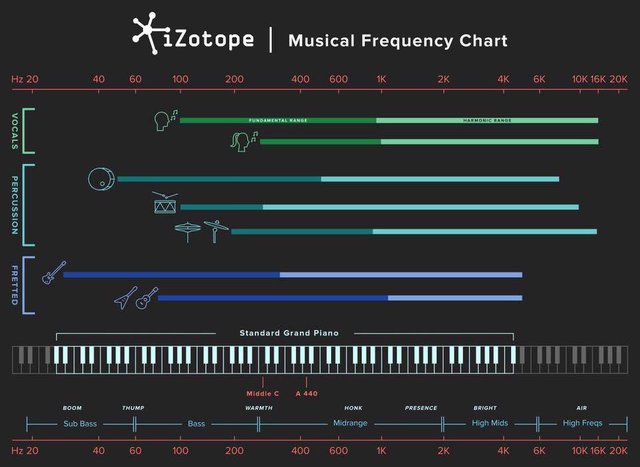
To keep it less technical, equalization is simply an audio signal processing of Boosting (adding) or Cutting (reducing/attenuating) the levels of certain frequency components in an audio signal. The idea revolves around the categories of frequency ranges from 20Hz to 20kHz. They are split as such.
Simple form:
Low (20Hz - 250Hz)
Mid (250Hz - 4kHz)
High (4kHz - 20kHz)Detailed form:
Low (20Hz - 140Hz)
Low Mid (140Hz - 400Hz)
Mid (400Hz - 2.6kHz)
High Mid (2.6kHz - 5.2kHz)
High (5.2kHz - 20kHz)
With equalization or EQ for short, we increase and reduce, in audio terms, boost and attenuate/cut these frequencies depending on the audio material to fix and/or enhance it according to the necessity and preference of the materials and context of the whole mix itself. Remember, mixing instruments in a song in solo, won't do any good if they don't sound great together with the rest of the elements in the mix. This applies to all the processing that is done. So always mix with all the other elements together. Solo only when needed and for critical tweaking.
You probably would've seen 2 knobs/sliders at least, on some radio playback systems, high-fi, home theater systems or even on your phone's media player that says "Bass and Treble". That is actually an EQ built-in to the system to allows you to increase and/or reduce the Bass and Treble of whatever it is that you're listening to. So whenever you twist and turn those knobs to get the song blaring with bass and treble or reduce them, you're basically EQ'ing the signal coming out from your speakers. Feeling like an engineer huh? Right...Right...
Types of Equalizers / EQ
Let's take a look at some of the main types of equalizers used by audio engineers to mix. Since the days of plugins made available, digital signal processing became more and more of a norm in mixing these days. But analog processing is still widely used by high end professionals and those who have the passion for it with the luxury to own the hardware. We will take a look at most of the EQ types n plugin format. Even in the plugin format, there are a lot of analog hardware EQ modeled plugins which sound almost the same as the hardware. Technology!
1. Filters / Shelving EQ
This is one of the most common type of EQ.
As you can see in the image above. "Filters" actually do as what their name says, they "Filter Out" frequencies at the point you set them. This is usually used to remove Low Frequency rumbles, and High Frequency leaks and noises. This is used primarily to clean up the audio signal and also before compressing a signal by taking out the unwanted low and high frequency so that the Compressor that comes after it won't be triggered by them, producing a better result.
Shelving EQ is pretty straight forward as well. But a Shelf can either boost or attenuate above and below the frequency you set it. This results a smoother equalization that affects a wider range of frequencies. Both Filters and Shelving EQ can be found as the 1st option in the EQ circuit. Commonly on mixing consoles. But with technology, the positioning of these process have been changed in many ways in plugins.
2. Fixed EQ

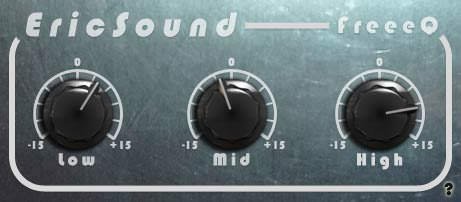
Fixed EQ is what I've mentioned before. Remember the knobs you can find on audio playback system? Bass and Treble? Add another in the middle that says "Mid". That's all to it. Fixed EQ is the most basic form of equalization. They're mostly found on cheap and small mixers. They're created to do broad strokes of changes in the frequency to tidy them up. They're not designed to do critical EQ changes. They come with 3 knobs, at least. Fixed at 80Hz - 500Hz for Lows, 500Hz - 3kHz for Mid and 3kHz - 12kHz for High (may vary). You just turn the knob to either increase or reduce at these frequencies. Nothing too complicated at all.
3. Sweepable Mid EQ
This is one step above the Fixed EQ. Their Low and High frequencies are still fixed at their corresponding frequencies but they have an extra knob for the Mid frequency which allows you to choose or "sweep" between the given range of Mid frequencies and then decide whether you wish to boost or attenuate the selected frequency. This gave the engineers flexibility to have more focus on the Mid range as they can now choose the frequencies. Usually between 100Hz to 8kHz but this range may vary depending on the hardware and plugin manufacturers.
4. Parametric and Semi-parametric EQ


This is the "Swiss Army Knife" of EQ that can do almost anything you need for frequency adjusting. In the hardware realm, they usually come in the expensive mixing consoles and single processing units. In the plugin world, there's a huge range of Parametric EQ available for engineers to use. They usually have and are able to do everything that all the other EQ we've talked before have and can do. They can Filter out frequencies in Low and High, they can do Shelving equalization, they have wider range of sweepable frequency selection than the Fixed EQ with their own cut and boost knob. But what makes Parametric EQ special is, they come with an option called "Q". The "Q" refers to the the "width" of the EQ band you're affecting. With a smaller "Q", the EQ band affects a wider range of frequencies, we call it "Open Q" and with a higher "Q" it can really get narrow and affect only a specific, small and right amount of frequency range you set it to, "Tight Q" (we also call it Notch). This is extremely good for "clinical" equalization. To remove any unwanted, resonant and annoying frequencies. Usually to fix more than enhance.
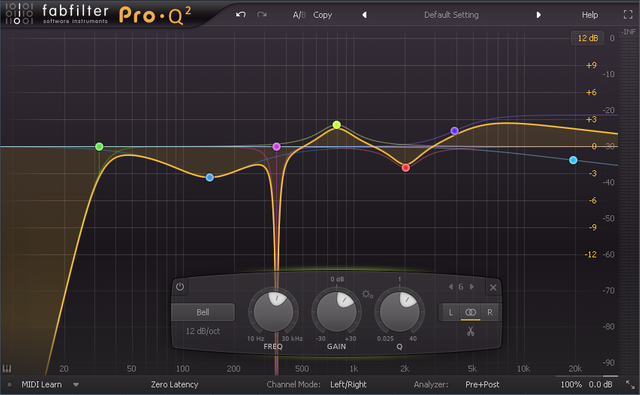
A Semi-Parametric EQ is the same as a full Parametric EQ with only the lack of "Q" option. However, they have more/similar sweepable frequency ranges and all with its' own cut and boost knob just like the full parametric EQ. The amount of versatility you get from both this EQ is what makes it special. And with technology, this just got better. Fabfilter's Pro-Q 2 for example (image above), can do almost any shape of EQ curves you want it to do. And it has a high limit of EQ bands you can create anywhere on in the frequency range and affect the signal either in stereo or mid/side. Amazing EQ! One of my personal favorite! (The light purple band in an example of High Q/Notch).
5. Graphical EQ


Last but not least, this is one of those EQ used in a more practical way. They are not included in any mixing consoles, rather used as an external unit outside of the console, usually on the output section. They come with multiple sliders, each representing its' own frequency. Some units come with a lot of sliders to cover more frequencies within the 20Hz to 20kHz range, some come with less sliders. They are usually used in live sound situations where engineers can reduce a specific frequency when there's a problem, commonly feedback issues. Graphical EQ can also be used in the mixing room to correct problematic room frequencies. If the room has a buildup or problem in any given frequency, you can add a graphical EQ at the output section of your setup before the signal reach the speakers and remove the problematic frequencies to correct the listening environment. Although this may not be as important in a recording studio environment, graphical EQ is essential in live sound setups.
Extra: Dynamic EQ
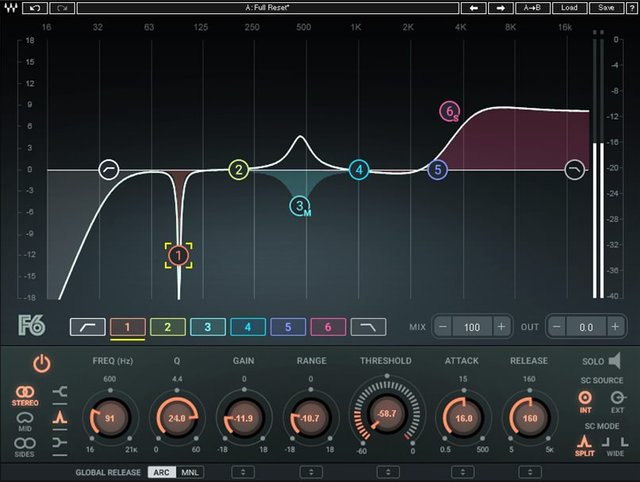
This is a product of technology. Combining the power of dynamic processing, a compressor, with EQ, came along the Dynamic EQ. The objective was simple. Usually, with the commonly used EQ we talked above, when you cut a or boost at a certain frequency, they're remain in that state, static throughout the signal being played. A small example would be, removing the "Boxiness/Muffled" frequency from a vocal with a Parametric EQ will remain removed throughout the vocal being played. If at any section of the song the vocal is not so muffled and don't really need any EQ cutting, the vocal might sound "thin" because the Parametric EQ is constantly reducing the frequency it's set to. It does not know when not to cut and when it needs to cut or even boost.
Dynamic EQ solves this problem. The engineer can set the reduction range of how much he/she wants the frequency to be cut/boost in dB, and also set the threshold in which the EQ will start cutting/boosting once the signal goes above the set the threshold within the set reduction range. This allows the engineer to basically tell the EQ, "Okay, cut 250Hz only when the boxiness gets too much and boost 9kHz and above only when I want you to and sweeten up the signal. Got it bro? Dope!" Of course you won't be talking to the plugin, but you get idea. This helped many engineers in making more musical and less static changes to signals ensuring a natural feel to the process.
Now that you know the 5 common types of Equalizers (EQ) available out there and also what each of them do, all you have to do is practice using them. You can always combine the different types of EQ in a single processing chain depending on the need and use case. In short, Equalizers will allow you to sculpt and shape your sound depending on preference. And in combination with Compressors in the right hands, these 2 processors can pretty much take a song from start to complete just like that.
Point to remember: Equalizing introduces phase shifts in the frequency being affected. This changes might not be as transparent but when done too much EQ than necessary, you can audibly listen to the sound drastically change from its original sound to a different sound after EQ. Keep this in mind and work your process.
Quick Tip: When using an EQ practice more into cutting than boosting when you're trying to fix something besides the obvious problems like Muddiness, Boxiness and Harshness. For example, if you want the 8kHz to shine, instead of boosting it at 8kHz a lot, cut a little at 6kHz to 7kHz. This will give space for the 8kHz to shine through.
Technical Tip: Use broad Q bands to boost and narrow Q bands to cut. Not a rule, but a tip to know.
The goal of this post if to educate on Equalizers, the types, and how each work. Once you know these basics, you can easily formulate your own way of using them to get the sound you want from whatever it is that you're working on. You should already know how essential EQ is in a mixing process by now. The same goes with compressors which I hope to cover soon.
I hope this post gave some valuable information on Equalizers. If you're a mix engineer in the making. Or if you're looking to learn. Focus on mastering both EQ and Compression and then move on to the next like effects as they are all about creative processing rather than essential signal processing which is more crucial to master.
Thank You for reading. If you've came this far down the post, then you're already a step ahead in the learning process. Keep learning. Keep practicing. You'll get there in no time. Contact me, or comment below if you have any questions and I will do my best to help you. With that said, have a great day and happy mixing #steemians!
Follow me on other social media!
YouTube
Feel free to contact me if you wish for me to work (mix/master) on any of your future projects be it songs or audio for visuals.
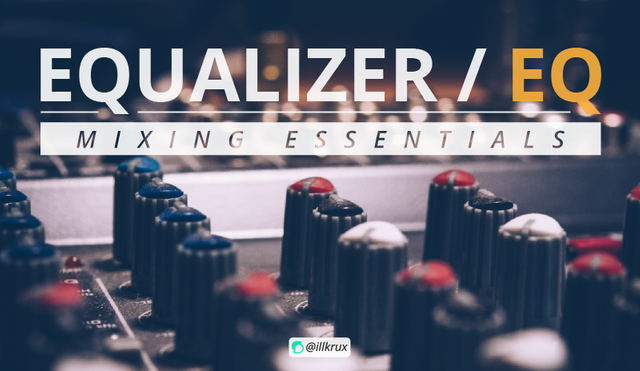

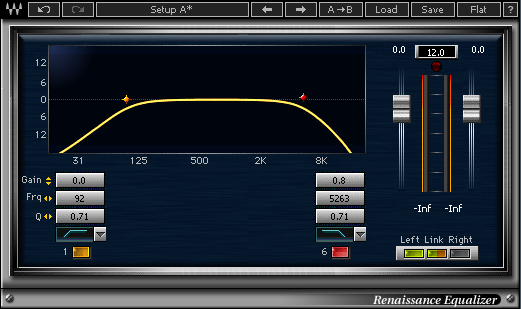
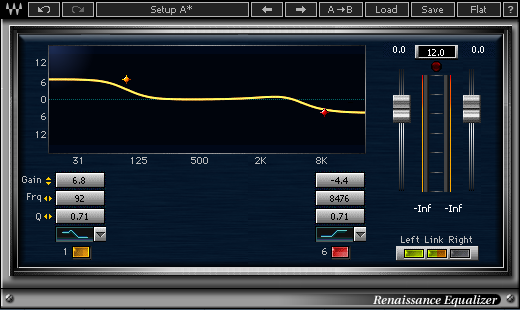
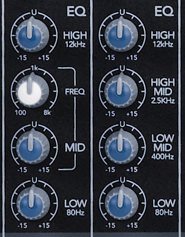

You’ve been upvoted by TeamMalaysia community. Here are trending posts by other TeamMalaysia authors at http://steemit.com/trending/teammalaysia
To support the growth of TeamMalaysia Follow our upvotes by using steemauto.com and follow trail of @myach
Vote TeamMalaysia witness bitrocker2020 using this link vote for witness
it's a passion . . love the way you explain it.
Glad to see someone acknowledge the passion. Thank you bro! Totally appreciate it! Thank you for reading as well. That means a lot to me.
excellent post, very well explained. Greetings from Venezuela
Thank you! Appreciate it!